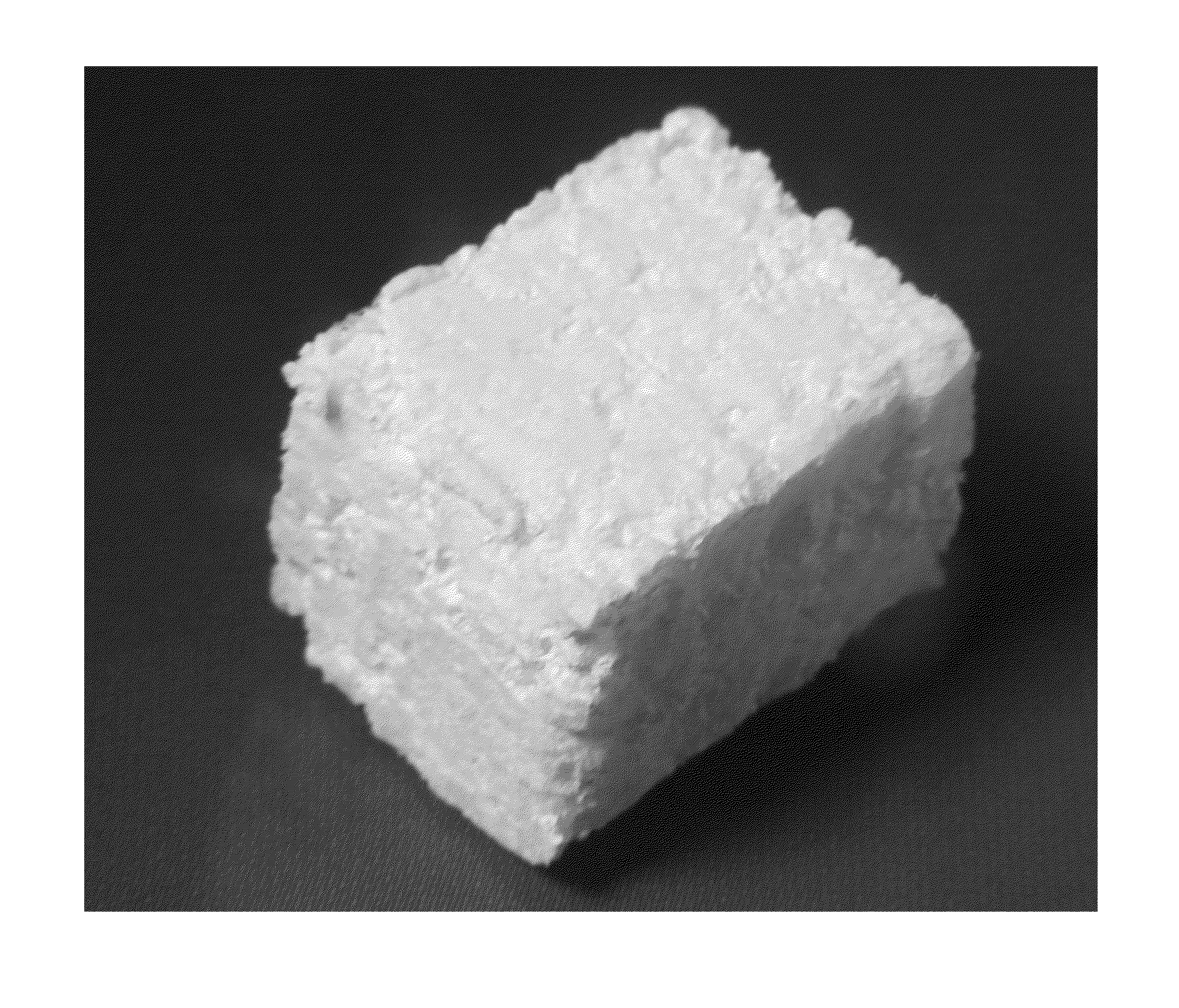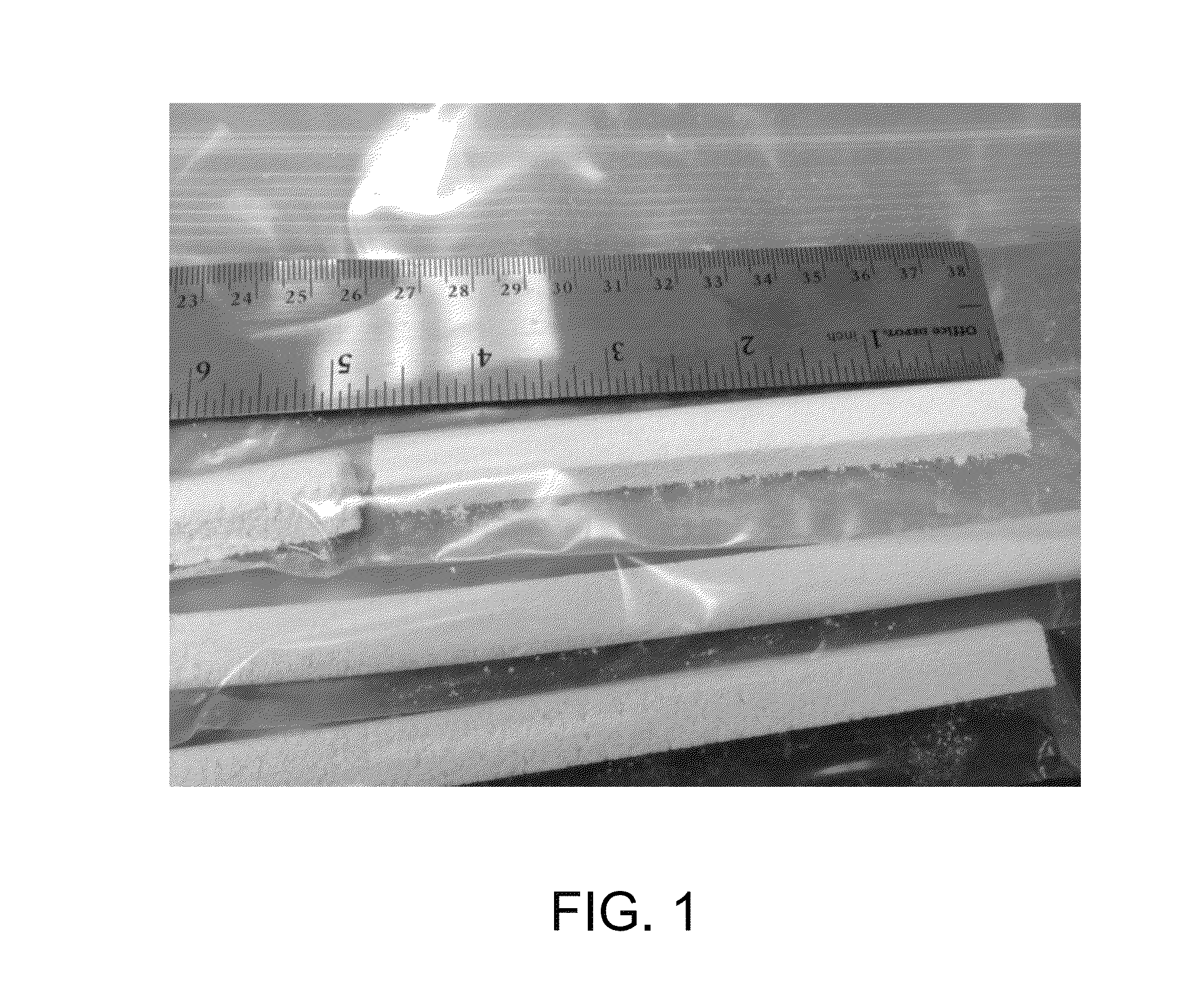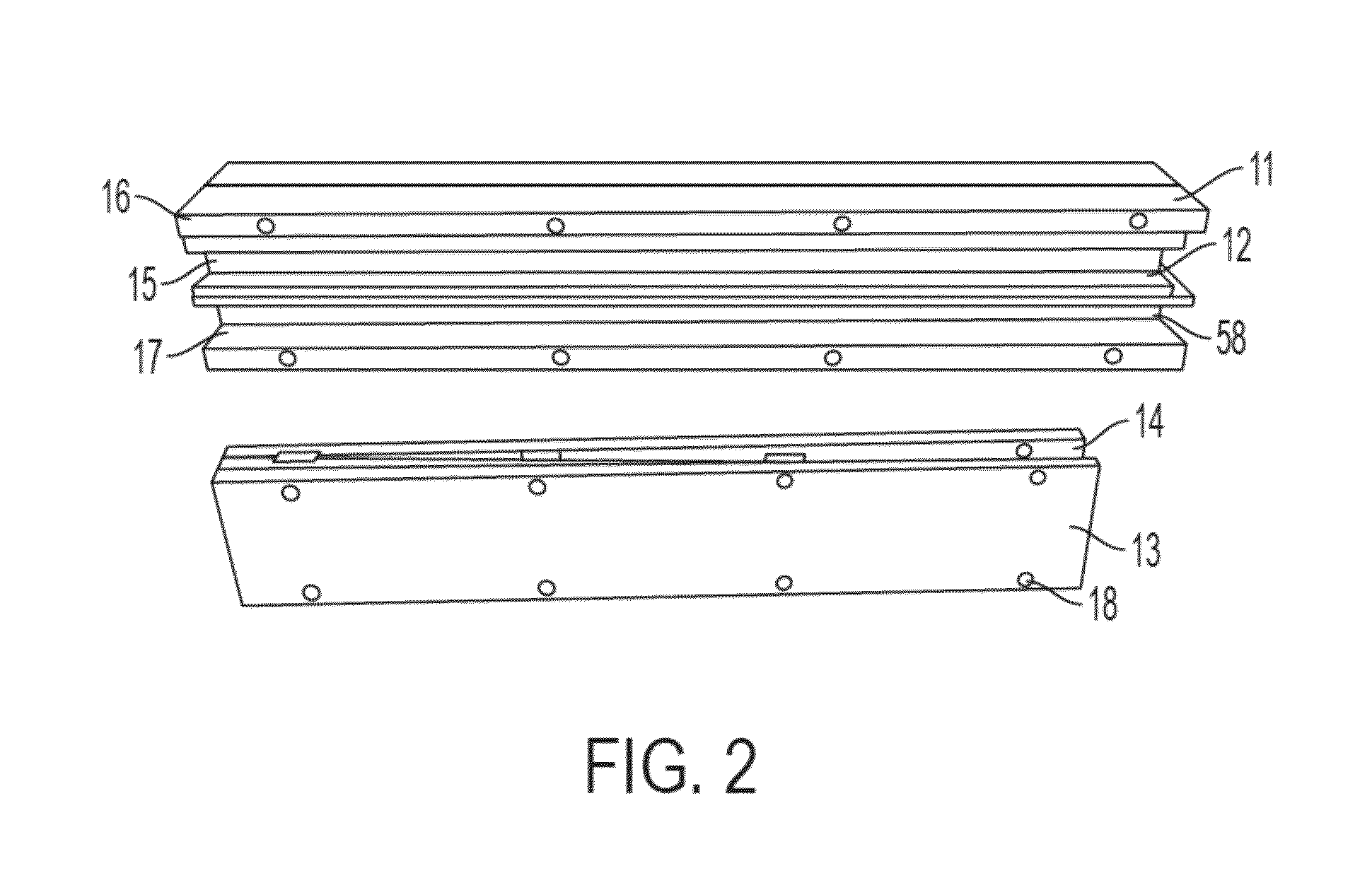PLGA/HA hydroxyapatite composite bone grafts and method of making
a technology of hydroxyapatite and composite bone grafts, which is applied in the field of hydroxyapatite/ha composite bone grafts and the making field, can solve the problems of rapid degradation and leave voids formerly occupied by sodium chloride particles, and achieve the effects of fast, high-quality, uniform coating, and improved bone cell propagation and ingrowth
- Summary
- Abstract
- Description
- Claims
- Application Information
AI Technical Summary
Benefits of technology
Problems solved by technology
Method used
Image
Examples
example 1
Process
[0064]L-Lactide / caprolactone copolymer / HA TCP composites were prepared with 75:25 Lactide / caprolactone copolymer particles (diameter=100-200 μm μm, molecular weight=100,000 Da, Purac Biomataerials), HA TCP particles (diameter=approximately 100-1000 nm, 40% HA to 60% TCP). The polymer particles were mixed with the HA TCP particles. The polymer / HA TCP mass ratio ranged from 80:20 to 50:50 polymer to HA TCP by weight. The mixture was loaded into a mold and exposed to high pressure CO2 gas (2000 psi) for 3-4 hours to saturate the polymer with the gas. Temperature in the reaction vessel is maintained at around 200 degrees F. to maintain CO2 in the supercritical range. Then, decreasing the gas pressure to ambient pressure created a thermodynamic instability which led to the nucleation and growth of CO2 pores within the polymer scaffolds.
[0065]The specific ratios of polymers is not critical, but plays a role in absorption. 50:50 ratios of co polymers tend to absorb faster. Changing ...
example 2
[0097]PLGA / HA scaffolds were created using the process of Example 1 and were ground to a powder sized between about 250 nm and about 2 mm. Most preferable the powder is graded into two different sizes of particles, the smaller consisting particles between about 250 nm and about 750 nm and the larger being between about 750 nm and about 2 mm. The resultant material can be used to pack surfaces around devices implanted in bone and packed in voids in bone to induce new bone growth. FIG. 14 is a photograph of the bone graft in powder form.
[0098]Those of skill in the art are familiar with the use of bone graft materials. The present invention can be used in the same manner as any other bone graft material. In a preferred delivery system, the bone graft material is mixed with polyethylene glycol or another hydrogel to form a paste. The material can be premixed and sold in a syringe for easy application or can be mixed at the point of use and delivered via any convenient means. When ...
example 3
Molded Bone Grafts
[0100]The scaffold of Example 1 can be molded into a rigid implantable bone graft material of desired shapes by creating an appropriate mold for use in the reaction vessel. Referring to FIG. 2-7, the mold 11 consists of a bottom 40 and a right side 16 and a left side 17 which define a void 23. End caps 24 are placed at each end and a top cap 14 closes the mold. The shape of the void 23 determines the final shape of the bone graft 10. The mold can be designed to produce a single implant or can be designed to produce multiple implants. In the figures the mold contains a divider for producing two implants. One of skill in the art will appreciate that the mold can be designed to create bone grafts having complex shapes as well as simple geometric shapes. In the Figures, the molds are assembled using screws 22 although clamps or shaping the mold so it is evenly supported in the pressure vessel can also be used. When screws 22 are used, the top cap 14 and end caps 24 wil...
PUM
| Property | Measurement | Unit |
|---|---|---|
| diameter | aaaaa | aaaaa |
| diameter | aaaaa | aaaaa |
| diameter | aaaaa | aaaaa |
Abstract
Description
Claims
Application Information
 Login to View More
Login to View More - R&D
- Intellectual Property
- Life Sciences
- Materials
- Tech Scout
- Unparalleled Data Quality
- Higher Quality Content
- 60% Fewer Hallucinations
Browse by: Latest US Patents, China's latest patents, Technical Efficacy Thesaurus, Application Domain, Technology Topic, Popular Technical Reports.
© 2025 PatSnap. All rights reserved.Legal|Privacy policy|Modern Slavery Act Transparency Statement|Sitemap|About US| Contact US: help@patsnap.com



